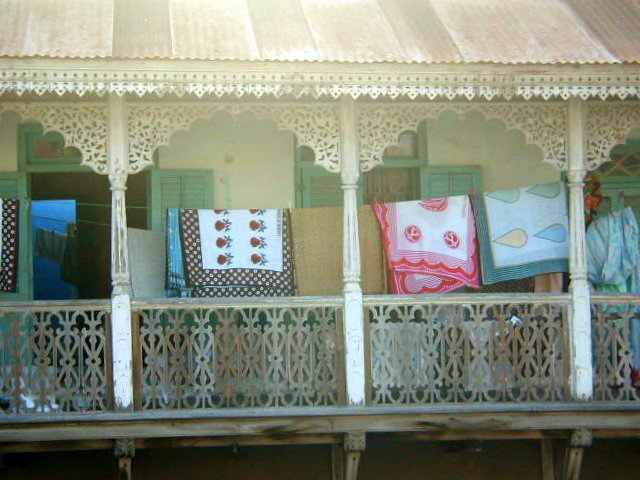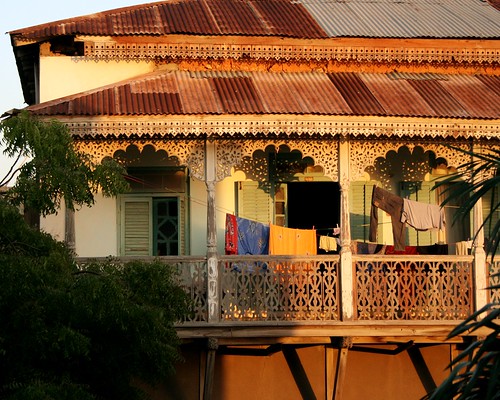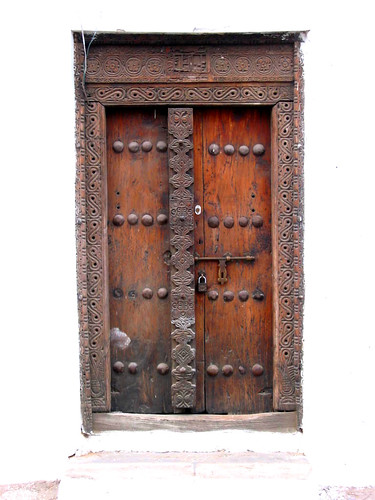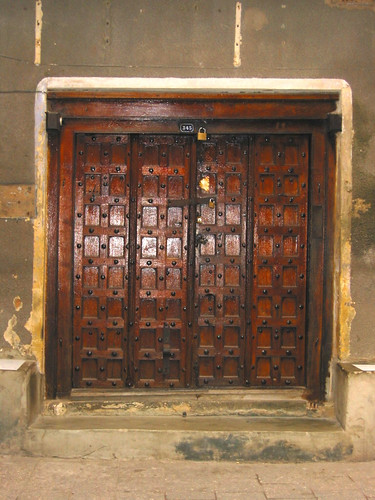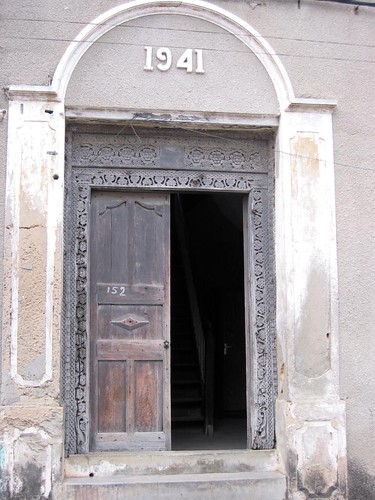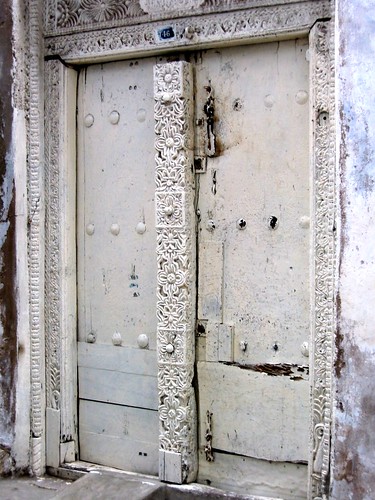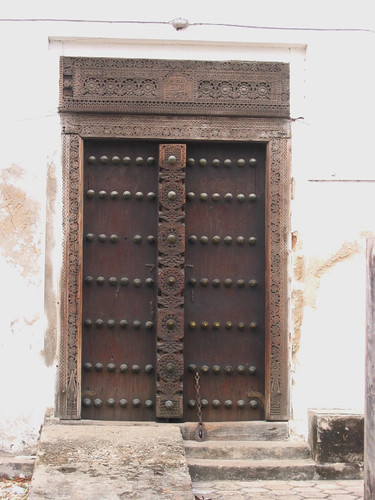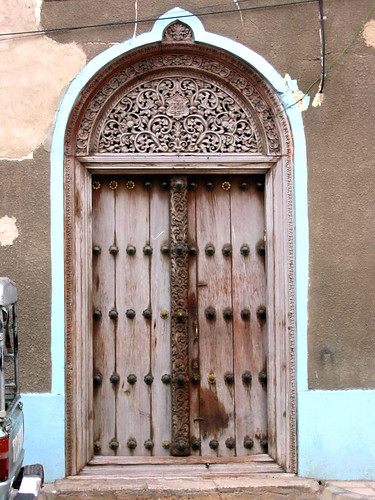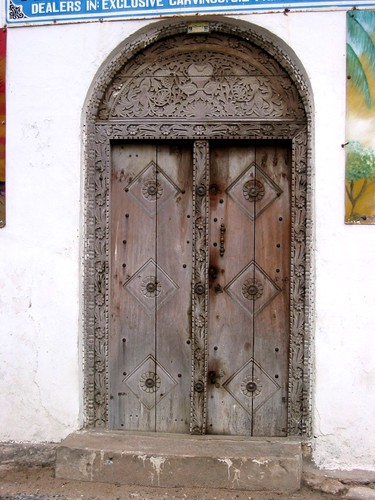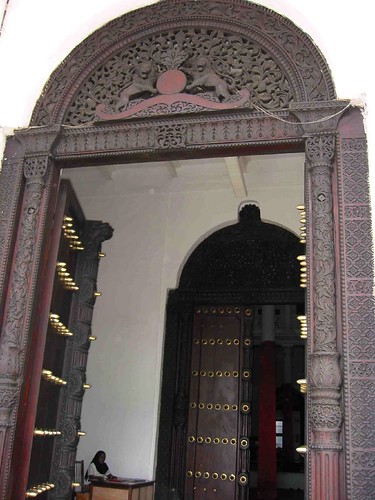the Darajani Market of Stonetown, Zanzibar
The Darajani Market in Stonetown, Zanzibar is historical. It is located a stone’s throw from the city’s biggest market of another kind, that which traded slaves. Darajani however was opened in 1904, a quarter of a century since slave markets were outlawed in 1873.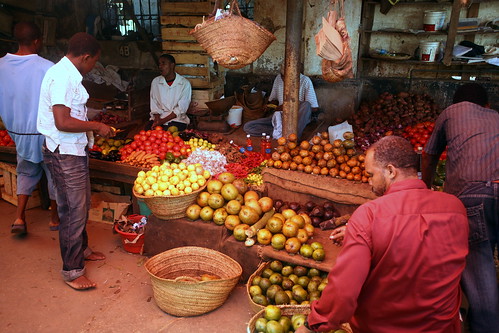
a fresh fruit stall in Darajani Market, Stonetown, Zanzibar, Tanzania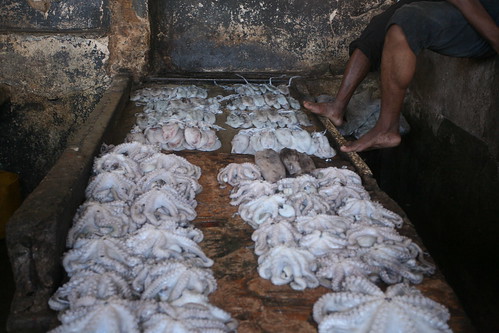
squid and octopus for sale
Today, the market looks unassuming and humble. Blocks of soft gray stones still form the solid façade. The roof is comprised of GI sheets that are partially rusted. A finial sticks out at the roof’s highest peak which from a distance, almost makes the market resemble a church.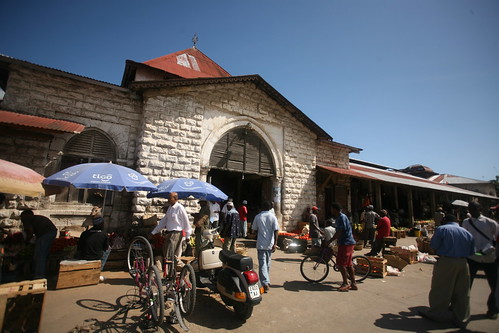
the stone façade of Darajani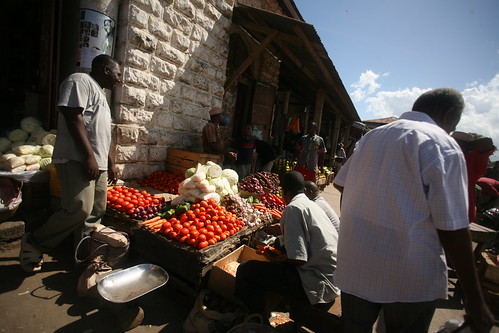
vegetables being sold in front of the market
a Masai man passing through
Inside, the market is divided into four sections. There is quarter for seafood, from the popular octopus to crabs and fishes of various sizes. The walls are as red with blood as the floor is dark with hardened muck. One room is used for auction, which take place early in the morning. 
fillet of fish on display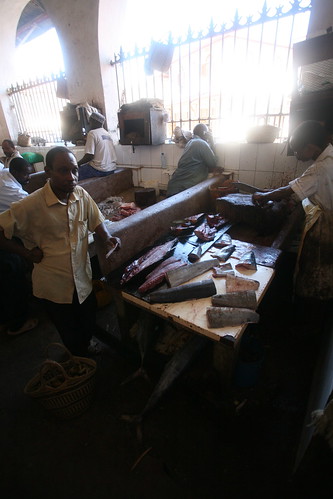
the fish section of the market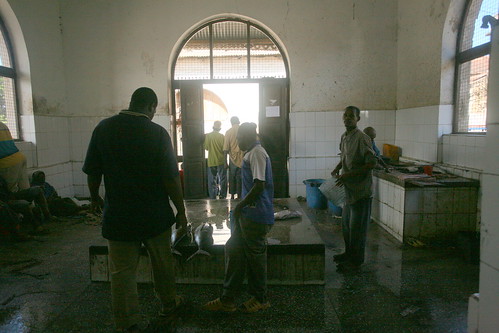
a room used for the fish auction
Another hall is for meat, primarily beef. Butchered blocks are displayed everywhere here, and carcasses are left hanging on hook for easy perusal. Zanzibar is predominantly Muslim so pork is virtually forbidden in Darajani (they say you have to go Christian mission for that). 
beef slices for sale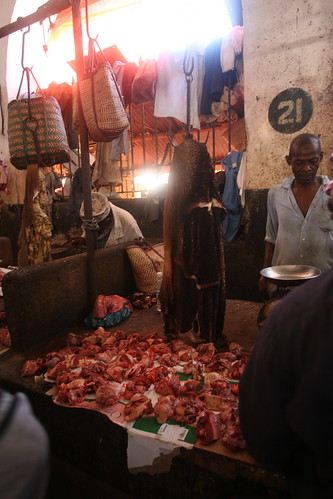
the beef market
Outside of the main building, stalls shaded by plastic tarps offer fruits, vegetables and spices. In another section is poultry. In the periphery, and deeper into the town are more stores and buildings that offer dry goods, from clothings to shoes and even jewelry.
fresh local produce like bananas
a selection of fruit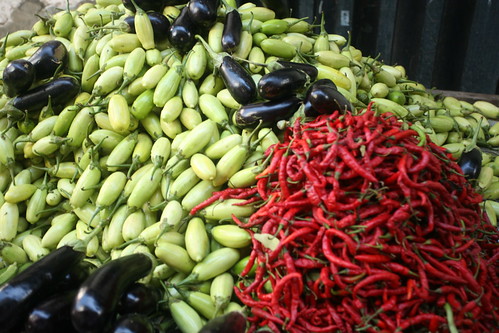
eggplants and chilies provide a clash of colors
Amidst the cacophony of sales negotiations and the din of clanging buckets, the market moves in a chaotic rhythm of its own. A hubbub of life swirls inside. As tourists click and jostle for that snapshot of local color, locals imperturbably go by their own way. As a Filipino, I’m used to this. The stench, the mud, the noise are a reminder of home, in a good and oddly ,assuring way.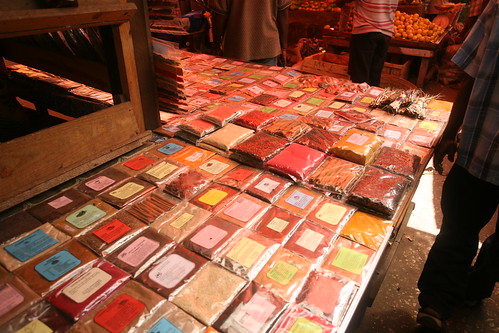
packets of spices catering to the tourists
To go: Daranjani Market is in Creek Road, north of New Mkunazini St., Stone Town, Zanzibar. It is near the Anglican Cathedral.






